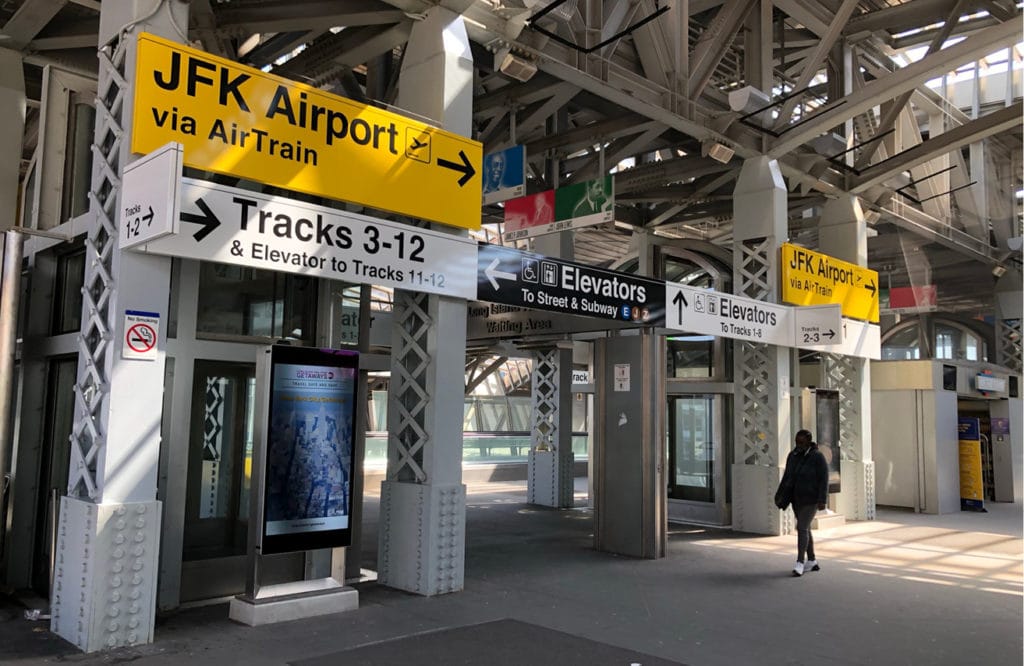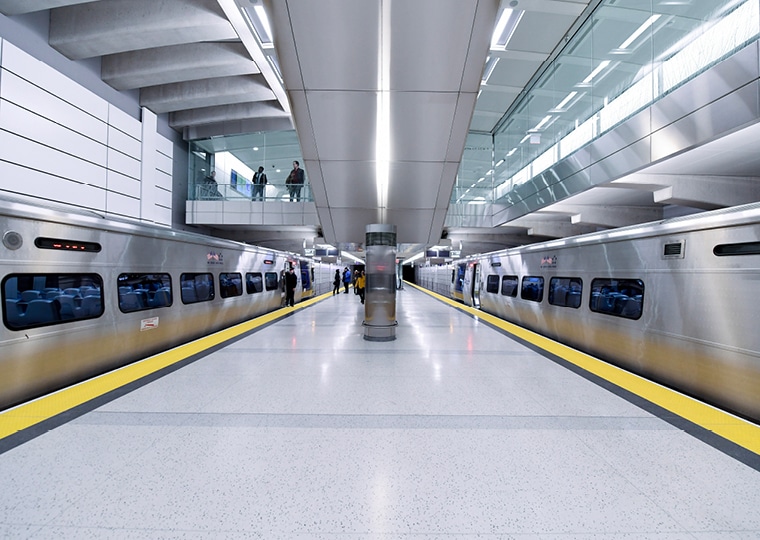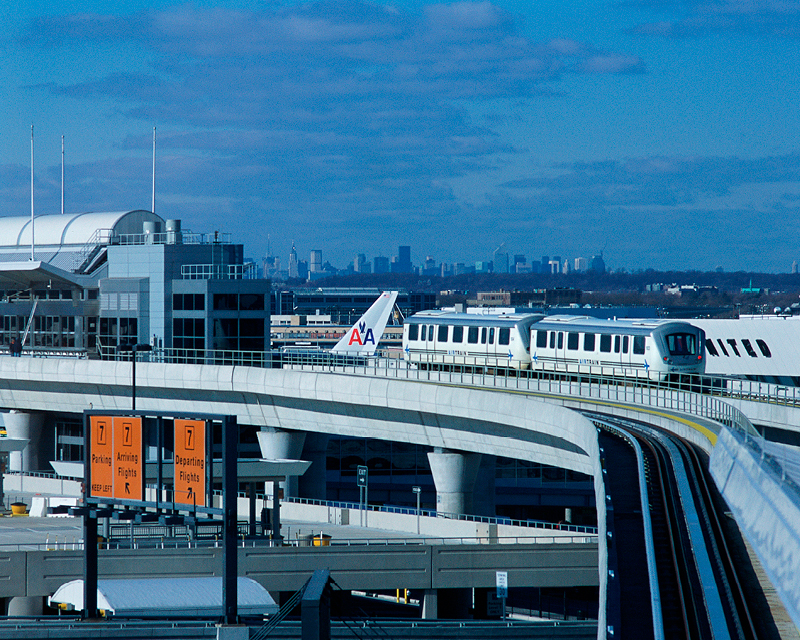
Nearly two decades after STV helped transform Jamaica Station in Queens into one of the busiest intermodal transit hubs in North America, the firm is playing a key part in a massive wayfinding overhaul at the station.
STV has been tasked by Long Island Rail Road (LIRR) to perform design services for a wayfinding program at Jamaica, which will update signage and other station elements, thereby making navigating the hub a more seamless experience for visitors.
Jamaica has long served as a major transfer point for LIRR service, but ridership at the station started to increase significantly after 2003 when AirTrain JFK light rail service between Jamaica and John F. Kennedy International Airport was launched. STV served as the lead designer for the AirRail Transit Consortium design-build team.
For the wayfinding program, pedestrians at the station will be directed via hundreds of new signs strategically located to change behavioral patterns. Senior project manager and vice president Alex Napoli, P.E., and his team incorporated input from the three different transportation agencies that operate at the station – the LIRR, New York City Transit (NYC Transit), and the Port Authority of New York & New Jersey. The team’s final report outlined four potential wayfinding solutions.
However, our team also had to overcome the challenge of producing a unified, consistent design standard for signage while collaborating with three different public agencies, which each had its own distinct signage standards.
“A major component of the project was identifying a design approach that wouldn’t feel like a deviation from any of the three individual styles,” said James Hemmerly, AIA, NCARB, and practice technical lead. “We also wanted to be mindful that JFK is an international airport meaning Jamaica Station has to accommodate international travelers.”
The design features a unified signage system that will direct customers throughout the hub to the AirTrain JFK terminal and show them where to connect to LIRR and NYC Transit service. Then, once visitors arrive at their specific destination within the station, they will be greeted by the familiar signage of each respective agency.
“The success of the design could be observed in real time throughout construction,” said Kris Horvath, LEED AP BD+C, designer, and construction support lead. “Construction was phased throughout the complex so that the majority of the new signs in one area would be installed prior to a subsequent area of the station. As each phase of the project was completed, clients reported a reduction in questions for directions.”





